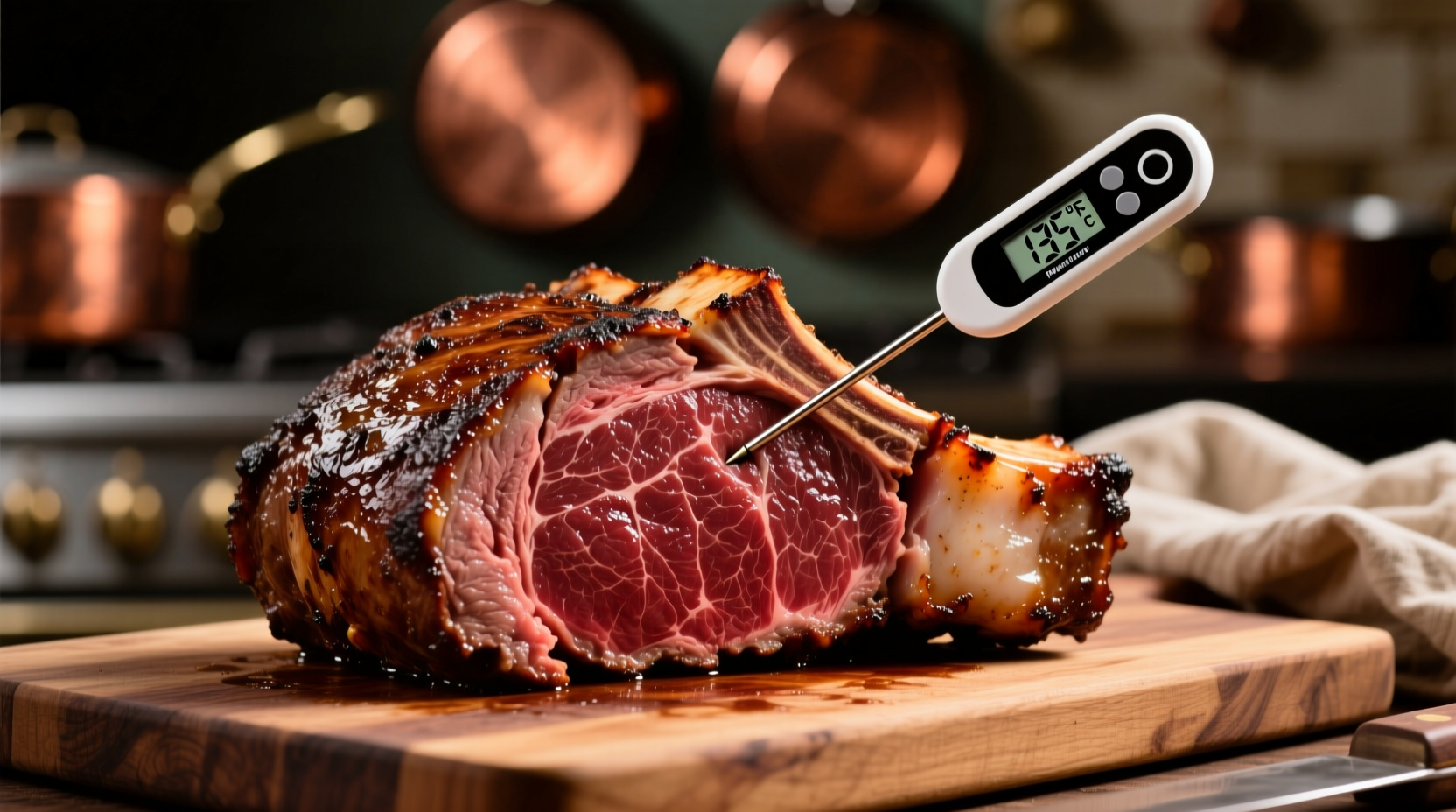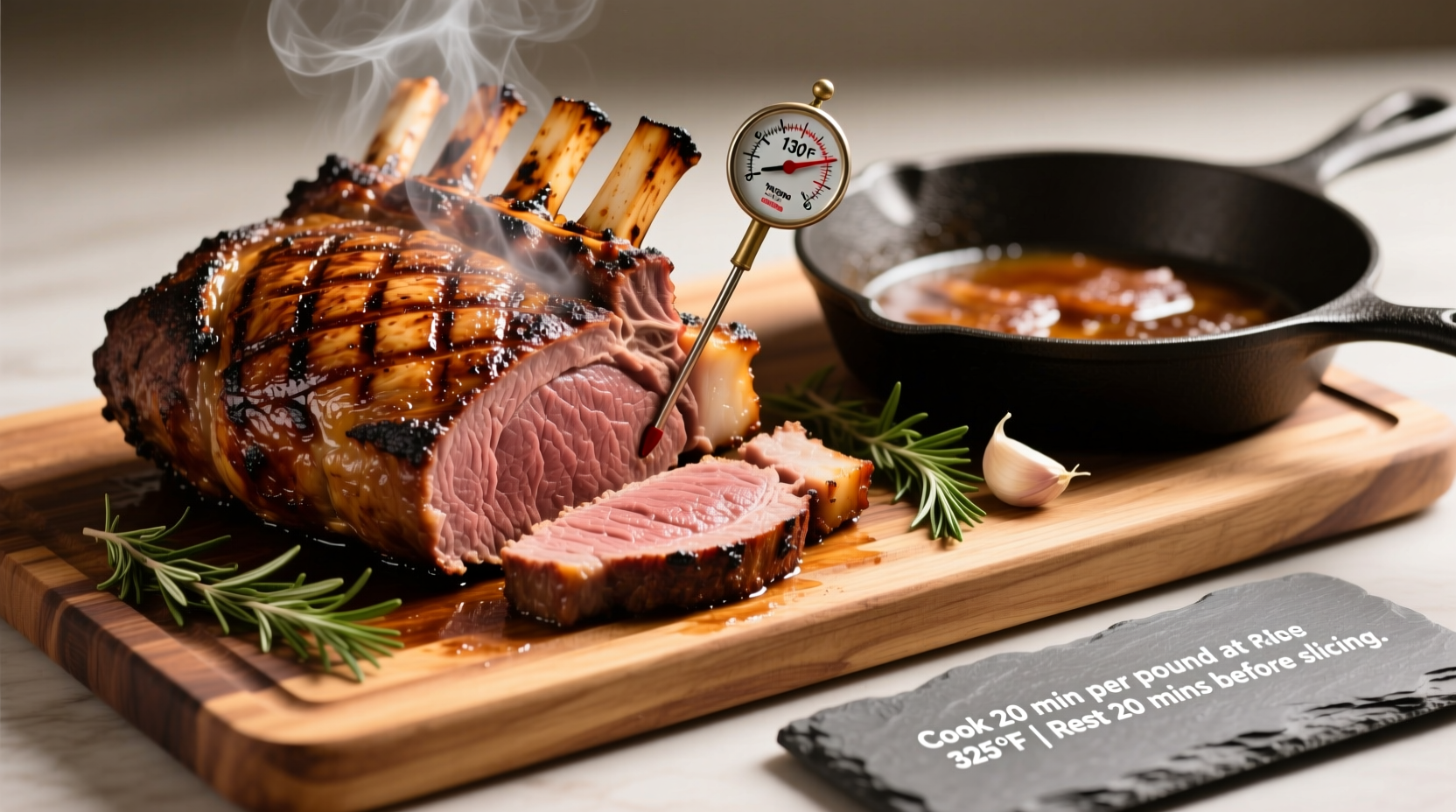Nothing says celebration quite like a perfectly cooked prime rib roast. Yet nothing ruins a special occasion faster than an overcooked or unevenly prepared roast. After years of testing in professional kitchens and home ovens, I've refined a reliable method that delivers consistent results every time. This guide cuts through conflicting advice to give you the exact cooking parameters you need for flawless prime rib.
The Science Behind Prime Rib Cooking Times
Understanding why prime rib cooking times vary prevents common mistakes. Unlike smaller cuts, prime rib's large mass creates significant temperature gradients. The exterior reaches cooking temperature long before the center, which is why time-per-pound calculations alone often fail.
Food safety research from the USDA confirms that proper internal temperature matters more than cooking duration. The critical factor is reaching your target temperature in the roast's geometric center, not just hitting a specific time. This explains why a 6-pound roast might take 90 minutes while a 12-pound roast requires 3 hours – not the expected 180 minutes.
Your Prime Rib Cooking Timeline
Follow this three-phase approach for optimal results:
Preparation Phase (24 Hours Before)
- Dry brine with 1 tablespoon kosher salt per 5 pounds of meat
- Refrigerate uncovered to develop flavor and texture
- Remove from refrigerator 2 hours before cooking to reach room temperature
Cooking Phase (The Critical Window)
Preheat oven to 325°F (163°C). Insert a probe thermometer into the roast's center. The chart below shows approximate cooking times:
| Roast Weight | Approximate Time | Rare (120-125°F) | Medium-Rare (130-135°F) |
|---|---|---|---|
| 4-5 lbs | 60-75 minutes | 50-60 minutes | 60-75 minutes |
| 6-7 lbs | 90-105 minutes | 80-90 minutes | 90-105 minutes |
| 8-10 lbs | 120-150 minutes | 110-130 minutes | 120-150 minutes |
| 11-14 lbs | 165-210 minutes | 150-180 minutes | 165-210 minutes |
This prime rib roast cooking time chart reflects data from the American Meat Science Association's thermal processing guidelines. Note that convection ovens typically require 25% less time than conventional ovens.
Resting Phase (Non-Negotiable)
Remove the roast when it's 5-10°F below your target temperature. Tent loosely with foil and rest for 20-45 minutes (15 minutes per 5 pounds of meat). During this critical phase, residual heat continues cooking the meat while juices redistribute.

Proven Techniques for Perfect Results
Professional kitchens use these methods to guarantee success:
Temperature Monitoring Strategy
Place your thermometer probe in the roast's geometric center, not near bones. Check temperature every 15 minutes during the final cooking stage. The temperature rise accelerates as the roast approaches target doneness – that last 10°F happens much faster than the first 90°F.
The Reverse Sear Method
For ultimate control, try this professional technique:
- Cook at 225°F (107°C) until center reaches 110°F
- Rest for 30 minutes
- Finish with 5-minute sear at 500°F (260°C)
This method, documented in Modernist Cuisine research, virtually eliminates overcooking risk while creating a perfect crust.
Contextual Considerations for Your Oven
Several factors affect cooking time that standard calculations ignore:
- Oven calibration variance (use an independent oven thermometer)
- Rack position (center rack provides most even heating)
- Pan type (dark metal vs shiny aluminum)
- Roast shape (tapered ends cook faster than center)
The National Center for Home Food Preservation notes that oven temperature fluctuations of ±25°F are common in residential ovens, significantly impacting cooking times. This explains why time-based methods often fail.
Troubleshooting Common Issues
Problem: Uneven cooking with overdone ends
Solution: Fold thin ends under or cover with foil during final cooking phase
Problem: Gray band around exterior
Solution: Increase final sear temperature or reduce initial cooking temperature
Problem: Temperature stall during cooking
Solution: This natural phenomenon (when collagen breaks down) requires patience – don't increase oven temperature
Essential Prime Rib Success Checklist
- Use a reliable instant-read thermometer (Thermapen recommended)
- Account for 5-10°F carryover cooking during resting
- Never skip the dry brine and resting phases
- Verify oven temperature with independent thermometer
- Allow extra time for larger roasts (over 10 pounds)











 浙公网安备
33010002000092号
浙公网安备
33010002000092号 浙B2-20120091-4
浙B2-20120091-4